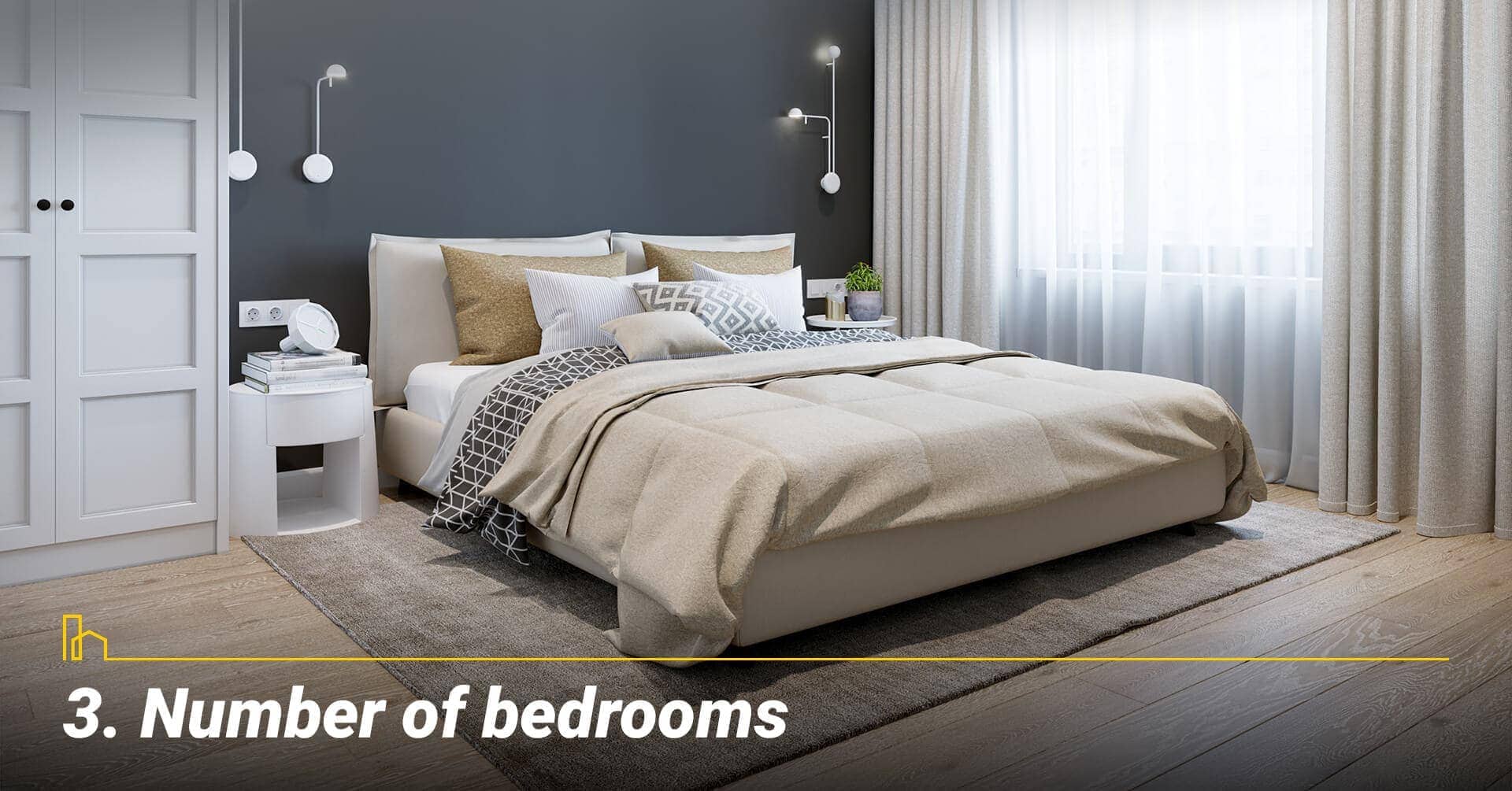Factors Influencing Bedroom Choice: Number Of Bedrooms In A House

The number of bedrooms in a house is a crucial factor for many homebuyers. It directly impacts the living space, comfort, and functionality of the dwelling. Several factors influence the choice of bedroom count, including lot size, house size, location, and personal needs.
Relationship Between Bedroom Count and Other Factors
The number of bedrooms in a house is often influenced by the size of the lot and the house itself. Larger lots typically accommodate larger homes with more bedrooms, while smaller lots might limit the number of bedrooms due to space constraints. For instance, a spacious lot in a suburban area might allow for a five-bedroom house, while a smaller lot in an urban area might only accommodate a two-bedroom apartment.
- Lot Size: Larger lots often allow for more bedrooms, while smaller lots may restrict the number of bedrooms due to space limitations.
- House Size: The overall size of the house directly influences the number of bedrooms. Larger houses generally have more bedrooms, while smaller houses tend to have fewer bedrooms.
- Location: Urban areas often have smaller homes with fewer bedrooms, while suburban and rural areas tend to have larger homes with more bedrooms.
Bedroom Count Trends Based on Demographics
The number of bedrooms in a house can also be influenced by demographics, income levels, and family structure. Families with children typically require more bedrooms than single individuals or couples. Similarly, higher income levels often correlate with larger homes and more bedrooms.
- Family Structure: Families with children typically require more bedrooms than single individuals or couples. A family with three children might need a four-bedroom house to provide adequate space for everyone.
- Income Levels: Higher income levels often correlate with larger homes and more bedrooms. People with higher incomes might be able to afford larger houses with more living space and bedrooms.
- Age: Younger families with children might prefer larger homes with more bedrooms, while older couples or individuals might downsize to smaller homes with fewer bedrooms.
Impact of Zoning Regulations and Building Codes
Local zoning regulations and building codes play a significant role in determining the number of bedrooms allowed in a house. These regulations aim to ensure that homes are built in accordance with local planning guidelines and to maintain the character of neighborhoods.
- Zoning Regulations: Zoning regulations specify the maximum number of bedrooms allowed in a house based on the lot size, density, and type of neighborhood. Some neighborhoods may have limits on the number of bedrooms allowed per lot, while others may have no restrictions.
- Building Codes: Building codes set minimum requirements for bedroom size, ventilation, and other safety aspects. These codes ensure that bedrooms are safe and habitable.
Average Bedroom Count for Different Housing Types
The average number of bedrooms varies significantly depending on the type of housing. Single-family homes typically have more bedrooms than townhouses or apartments.
| Housing Type | Average Bedroom Count |
|---|---|
| Single-family Homes | 3-4 bedrooms |
| Townhouses | 2-3 bedrooms |
| Apartments | 1-2 bedrooms |
The Future of Bedrooms

The traditional concept of a bedroom is evolving, driven by changing lifestyles and technological advancements. Home design trends are embracing flexibility and functionality, transforming bedrooms into multi-purpose spaces that cater to modern living.
The Impact of Remote Work and Flexible Living Arrangements on Bedroom Needs
The rise of remote work has significantly altered how we use our homes. With the blurring of boundaries between work and personal life, bedrooms are increasingly being incorporated into home office setups. This trend is further amplified by the growing popularity of flexible living arrangements, such as co-living and multi-generational households, where space optimization is crucial.
“The bedroom is no longer just a place to sleep. It’s becoming a sanctuary, a workspace, and a haven for relaxation,” says [Name of an architect or interior designer], a leading expert in contemporary home design.
Multi-Functional Bedrooms: The Rise of Home Offices and Guest Rooms, Number of bedrooms in a house
The demand for multi-functional bedrooms is on the rise. Homeowners are seeking spaces that can seamlessly transition from a bedroom to a home office, a guest room, or a combination of both. This trend is driven by the need for flexibility and efficiency in utilizing limited space.
- Home Offices: Built-in desks, integrated storage solutions, and sound-dampening materials are becoming essential features in home offices, creating a dedicated workspace within the bedroom.
- Guest Rooms: Fold-away beds, Murphy beds, and convertible furniture allow for space-saving solutions that can transform a bedroom into a guest room when needed.
Contemporary Home with Flexible Bedroom Arrangements
A contemporary home designed for flexible living might feature a master suite with a dedicated home office space, separated by a sliding door or partition. The guest room could be equipped with a Murphy bed that folds away during the day, creating a spacious living area for entertaining or hosting guests.
“The future of bedrooms lies in their adaptability. They should be able to transform with our needs, offering a variety of functions and configurations,” says [Name of an architect or interior designer].
